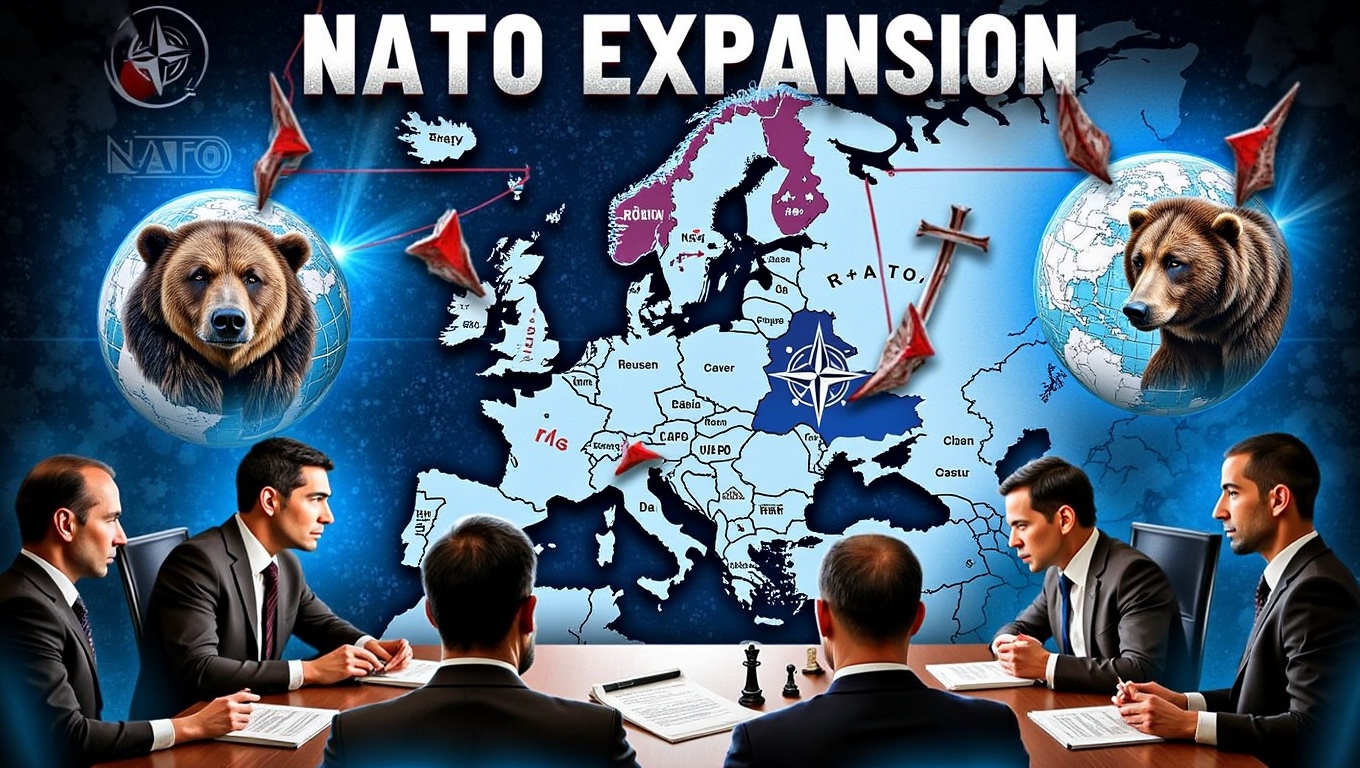Introduction
The North Atlantic Treaty Organization (NATO) has been a cornerstone of Western security since its inception in 1949. Originally formed as a collective defense mechanism against Soviet aggression during the Cold War, NATO has evolved into a dynamic alliance with an expanding membership and an increasingly global reach. However, its enlargement has sparked intense geopolitical debates, raising questions about its long-term implications for global security.
This article examines NATO’s expansion, its historical context, strategic motivations, and the consequences for international relations. By analyzing case studies and theoretical perspectives, we assess how NATO’s growth influences global power dynamics and whether it stabilizes or exacerbates geopolitical tensions.
Understanding the Landscape
Historical Context of NATO’s Expansion
NATO was established under the Washington Treaty with twelve founding members, primarily from North America and Western Europe. Its primary objective was to deter Soviet expansionism through collective defense, encapsulated in Article 5, which states that an attack on one member is an attack on all.
After the Cold War, NATO did not dissolve but instead expanded eastward, incorporating former Warsaw Pact nations. The first major post-Cold War enlargement occurred in 1999 when Poland, Hungary, and the Czech Republic joined. Subsequent waves included the Baltic states (2004), Albania and Croatia (2009), Montenegro (2017), and North Macedonia (2020). Most recently, Finland joined in 2023, and Sweden followed in 2024, marking a significant shift in Northern European security.
Strategic Motivations Behind Expansion
NATO’s enlargement serves multiple strategic purposes:
Deterring Russian Aggression – By integrating former Soviet-bloc states, NATO reduces Moscow’s sphere of influence, preventing potential revanchist policies.
Promoting Democratic Stability – Membership requires democratic governance and military reforms, encouraging political stability in Eastern Europe.
Strengthening Collective Defense – A larger alliance enhances military coordination and resource-sharing among members.
Countering Emerging Threats – NATO’s expansion addresses new challenges, including cyber warfare, terrorism, and Chinese influence in Europe.
However, critics argue that NATO’s growth provokes Russia, leading to heightened tensions rather than security.
Case Studies: Impact of NATO’s Enlargement
1. The Baltic States (Estonia, Latvia, Lithuania)
The inclusion of the Baltic nations in 2004 was a strategic move to protect them from potential Russian coercion. Since then, NATO has bolstered its presence through enhanced forward deployments and multinational battlegroups under the Enhanced Forward Presence (EFP) initiative.
Outcome: While this has strengthened Baltic security, it has also intensified Russia’s perception of encirclement, contributing to military buildups near NATO borders.
2. Ukraine and Georgia’s NATO Aspirations
Ukraine and Georgia have sought NATO membership since the 2000s, but their bids remain contentious. The 2008 Bucharest Summit declared that both would eventually join, but without a clear timeline.
Consequences:
Russia’s 2008 invasion of Georgia and 2014 annexation of Crimea were partly motivated by preventing NATO expansion.
The 2022 Ukraine War further highlighted the risks of NATO’s open-door policy, as Russia framed its invasion as a response to Western encroachment.
3. Finland and Sweden’s Accession
Historically neutral, Finland and Sweden applied for NATO membership following Russia’s invasion of Ukraine. Their accession strengthens NATO’s northern flank, particularly in the Arctic and Baltic regions.
Implications:
Russia has threatened military countermeasures, including nuclear deployments in Kaliningrad.
NATO’s Arctic presence grows, complicating regional security dynamics with Russia.
Implications and Consequences
1. Escalation of Great Power Rivalry
NATO’s expansion has deepened divisions between the West and Russia, reinforcing a new Cold War-style confrontation. Moscow views NATO’s growth as an existential threat, leading to aggressive posturing, including nuclear threats and hybrid warfare tactics.
2. Shifting Global Alliances
As NATO expands, alternative alliances emerge:
Russia-China Partnership – Strengthened by mutual opposition to NATO.
BRICS Expansion – More nations seek alternatives to Western-led security structures.
3. Burden-Sharing and Internal Divisions
Not all NATO members contribute equally to defense spending, causing friction. The U.S. pressures European allies to increase military budgets, while some nations resist deeper involvement in global conflicts.
Theoretical Analysis: NATO’s Role in International Relations
Realist Perspective
Realists argue that NATO’s expansion is a power-maximizing strategy, reinforcing U.S. hegemony and containing rivals like Russia and China. However, it risks provoking security dilemmas, where defensive actions are perceived as threats.
Liberal Institutionalist View
Liberals see NATO as a stabilizing force, promoting democracy and institutional cooperation. Enlargement spreads Western norms, reducing conflict through integration.
Constructivist Approach
Constructivists emphasize identity and norms—NATO’s expansion reflects shared Western values, but also reinforces an "us vs. them" mentality with Russia.
The Role of International Organizations
NATO does not operate in isolation. Its actions intersect with:
The United Nations – NATO’s interventions (e.g., Kosovo, Libya) sometimes clash with UN authority.
The European Union – EU defense initiatives (PESCO) complement NATO but also create overlaps.
OSCE – The Organization for Security and Co-operation in Europe mediates NATO-Russia tensions.
Strategies for Mitigating Risks
To balance expansion with stability, NATO should consider:
Strategic Clarity – Define red lines to avoid unintended escalation.
Dialogue with Russia – Reopen communication channels to manage crises.
Focus on Hybrid Threats – Strengthen cyber defenses and counter-disinformation efforts.
Inclusive Security Frameworks – Engage non-NATO states to prevent polarization.
Conclusion and Summary
NATO’s expansion has redefined global security, offering protection to vulnerable states while exacerbating tensions with Russia. While enlargement reinforces collective defense, it also fuels geopolitical rivalries, requiring careful strategic balancing.
The alliance must navigate between deterrence and diplomacy, ensuring that its growth does not trigger wider conflicts. As NATO evolves, its ability to adapt to emerging threats—while managing great-power competition—will determine its long-term viability in shaping a stable international order.


